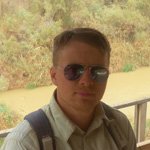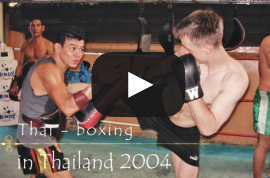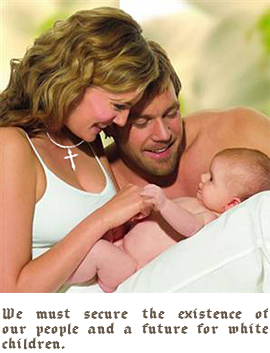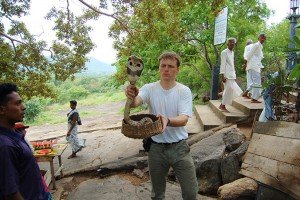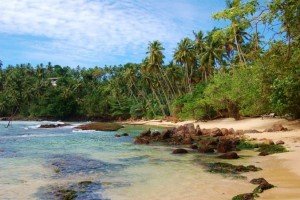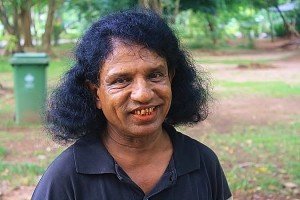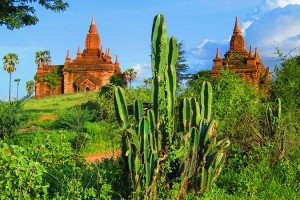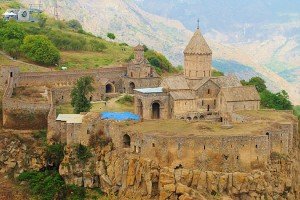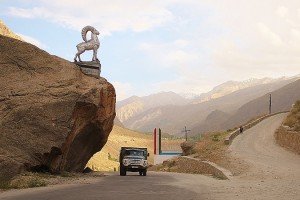Trip to Cambodia 2004
All travel reports are translated electronically although minor improvements are sometimes made.
Trip to Cambodia 2004
My trip: Dom Kralor – Stung Treng – Phnom Penh – The temples of Siem Reap and Angkor-Bavet.
My first day in Cambodia
(The unfortunate border in Dom Kralor, transport to Stung Treng, a bumpy ride to Phnom Penh)
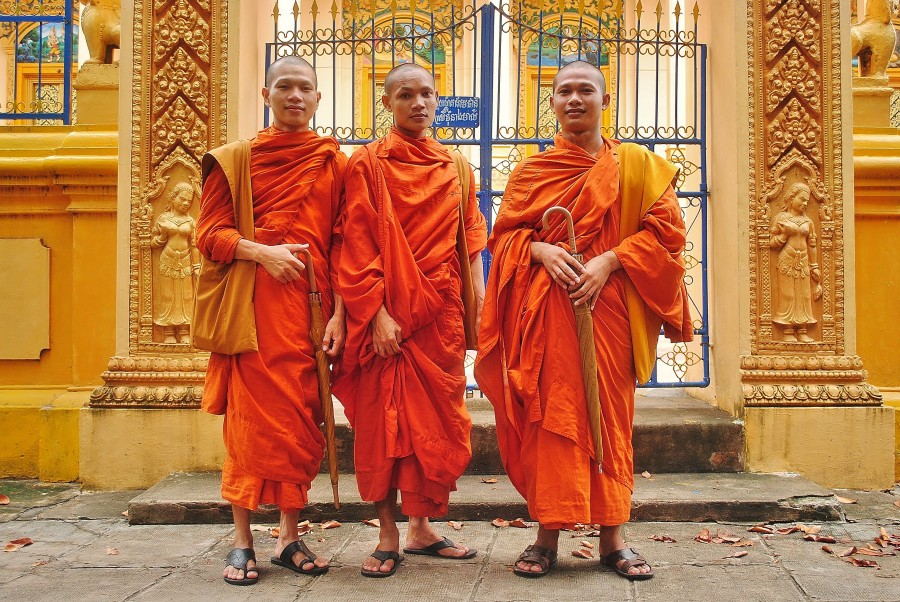
I came to Cambodia from Laos through the border crossing at Kralor House. This place is a small, uninteresting village, so I wanted to settle things at the border as soon as possible and move on to the road, which was not as easy as I thought. Like the Lao border, the border on the Cambodian side was also very modest. It was only a wooden house, built on the ball and in front of it was the Cambodian flag. On the spot, the official wanted a bribe of three dollars, but I had to pay for one dollar. It was a sunny, warm day, and it was going to be very long because the nearest town was an hour’s drive. In Poland it would be maybe 15 minutes but the drive along the roads is long and bumpy. On the border I waited two hours before the car arrived and it turned out to be quite expensive for local prices. The road to the nearest town led through the jungle and abounded in pits and bumps. There was not even a normal asphalt road, but the ground was half way up from the bottom, and we were driving from 10 to 20km / h as the driving conditions improved. After an hour I reached the river where a boat was waiting for me to take me to the other shore, ie the first Cambodian town called Stung Treng. Sailing on the boat, I was greeted by children floating near the boat and then I got off in a new place. While still on the boat I hoped to see river dolphins but this time I was not happy.
As soon as I got to know, Stung Treng has nothing interesting to say. This is a town that you have to come across to or from Laos and characterized by boredom and trash carried by the wind. But I spent a few hours here where I sat in the first pub to eat something and by the way I met several natives of interesting life in Europe and wanting to practice English. I had a good time with them, but unfortunately I did not have much, so I had to arrange transport to Phnom Penh, the capital of Cambodia, as soon as possible. The bus was not there and if you were to arrive it is not known when. So I took another expensive taxi and headed off. Just like the last one, the route was awful and unsuitable. Again we were driving 10 and 20km / h on the deep pits, but this time the ride was more interesting than the last. I had the opportunity to observe the life of the average Khmer who lived near the road. They lived in wooden houses set on bales and covered with woven palm leaves. They were all filthy, many people were barefoot and the kids were having fun. It was dark and still many houses were dark. In some, I saw candles burned and in one only had a TV which was very well seen through the cracks of the huts. It seems that electricity was a rare luxury here. I also noticed that there was a small rice field at each hut. The road was long and very tiring and it was impossible to sleep because the car was rocking all the time. Under these conditions, after almost eight hours of driving, I arrived at five in the morning to Phnom Penh. For the first time in Cambodia I also saw an asphalt road.
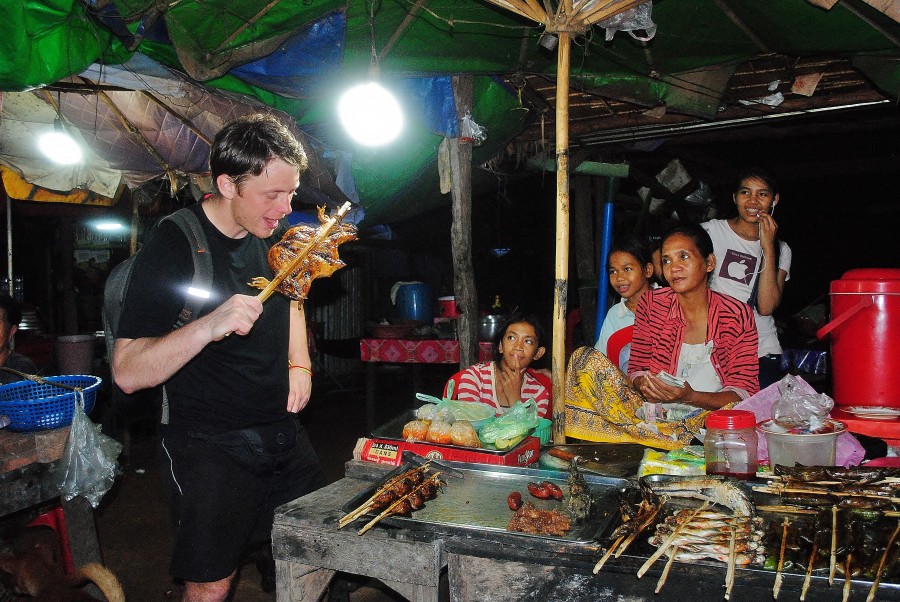
Phnom Penh
(General impression of the city, its misery, dirt, the Royal Palace, temples, bazaars and my money problems)
The driver drove me to one of the cheaper hotels and was pleasantly surprised because for only five dollars I got my own, clean room with double bed and private bathroom. On the other hand, while I was passing through the city that night, I saw people sleeping outside in their poles, and some on the ground. These are the shocking contrasts that I am constantly encountering in developing countries. Also in the hotel where I stayed, the lady at the reception did not sleep in the room. She only had her bed on the wall for herself and for the baby she often breast fed. No matter if there are customers or not. The next morning I went out to visit the Khmer capital. At first sight Phnom Penh looked quite dirty and chaotic. It is a small and polluted city, filled with bicycle rickshaws and mopeds, of which everyone is a potential taxi. There are not as many monuments as Bangkok but there are some worthwhile things to see and the fact that the city is located on Tonle Sap Lake and the Mekong River makes it easy to take a break from the exhaust and traffic. Walking through the city and watching people and their stalls, I felt that the place had its charm. The sellers were not too greedy, and the rickshaws always wanted to take me somewhere. First I went to the nearest and the dirtiest bazaar Phsar Tuol Tom Pong. This one was the best because it was the most realistic. Here meat was sold on the mat and the road near the stalls consisted mostly of mud. There were also some cheap pubs where the food turned out to be very good and the selection was very wide. Throughout my stay at this lovely place I ate here and did not even get poisoned. The people were also very nice and friendly which allowed me to spend most of my time with them. Another Phsar Thmei bazaar was at a much higher level. He was under the dome and here he was selling souvenirs, clothes, electronics and jewelry. I have to admit that what I have read about Cambodia is not quite true, because the city was very well stocked. The only problem is that the society is extremely poor and rarely can afford luxury. This type of place gives me a lot of joy because I can watch the local people live. I also went for a walk along the river, I talked with people and I did some photos. On the way I had the chance to see the old and scattered French architecture and visited one of the several temples. This is usually a tall, narrow building where you can climb up the stairs. There are several smaller temples and various sculptures around. Normally they are Buddha statues in many forms and elephants, but there are many others. One of the most famous is the temple on the hill which is Wat Phnom.
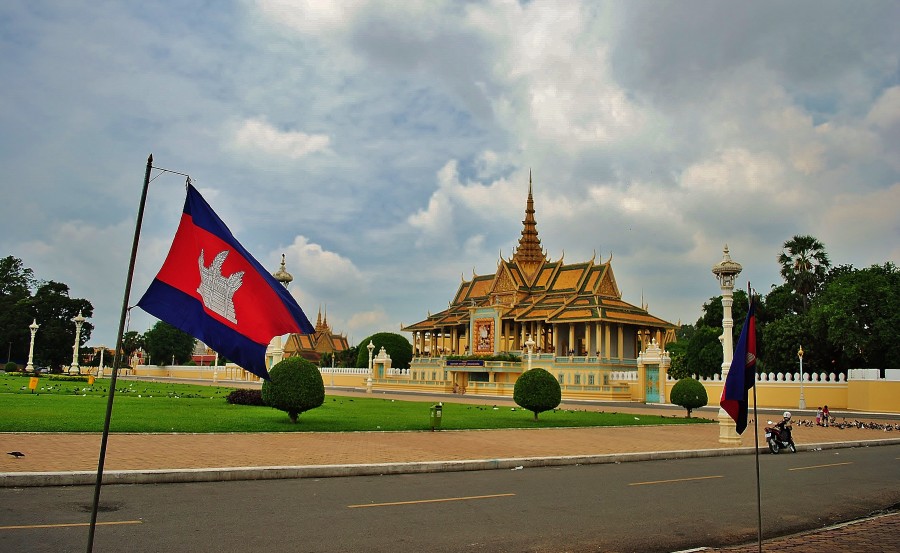
Very close to the river is also the royal palace made in the traditional Khmer style, richly carved and “drained” with gold. Outside is a large portrait of the young King Norodom Sihamoni. There is a silver temple made of 6 tons of pure silver. There is also a 17th-century crystal Buddha and another made almost exclusively of gold and decorated with 10,000 diamonds. The entire temple complex was located in a very well maintained garden and every temple was beautiful. It is a pity that this place has nothing to do with how Cambodia and its people look to the truth. I also went to a national museum, also made in Khmer style. It is a very interesting, red building, set on pillars, covered with beautifully made roof, and outside are two sculptures of elephants. There are sculptures left behind in the museum after the Khmer empire, as I suspected brought to Phnom Penh in case some of the Angkor temples were not available. All stone figures were very massive and many were not in the best condition. Unfortunately, taking pictures here was forbidden. Although the exhibits pleased me because they gave a lively picture of history, I loved the museum itself. In the middle was a garden with a small pond and a temple with a buddha in the middle. There were many palm trees and exotic plants around and outside the museum and trees with lions. In Phnom Penh, I also like the fact that after dark, one of the larger squares – just in front of the national museum – turned into a practice area. People of all ages, though most often run around the lawn, or do tents and other exercises. I also joined because here is something normal. This is the enormous cultural charm of Asia, which is a way to break away from the dirt and poverty of Phnom Penh. In the evening I went back to the hotel, stopped to take pictures with people and in such a nice company I spent time. I was warned earlier that it was dangerous here, and it was better not to walk alone after dark but never happened to me. Also, late in the evening I went to talk to the young people selling fruit drinks where we talked long about Cambodia and then they took me to a hotel on a moped. One of my saddest experiences was when I saw children in rags looking for food in the night while looking for food and people slept on the street in their cots or on the blankets on the asphalt. The next day I realized that I had no money anymore. So I went to the bank but had only a debit card and not a credit card and the ATMs to Cambodia had not yet arrived and I had a great problem. The lady I lived with gave me rice and paid for it. She said that I can return when I visit Cambodia next time. However, when I asked for help in the Polish consulate, I was told that tourists without money are like a bottomless piggy bank. Fortunately, I learned that in Phnom Penh there is Western Union. I called my mother to Poland, who sent me enough money to get to Vietnam because there are already ATMs.
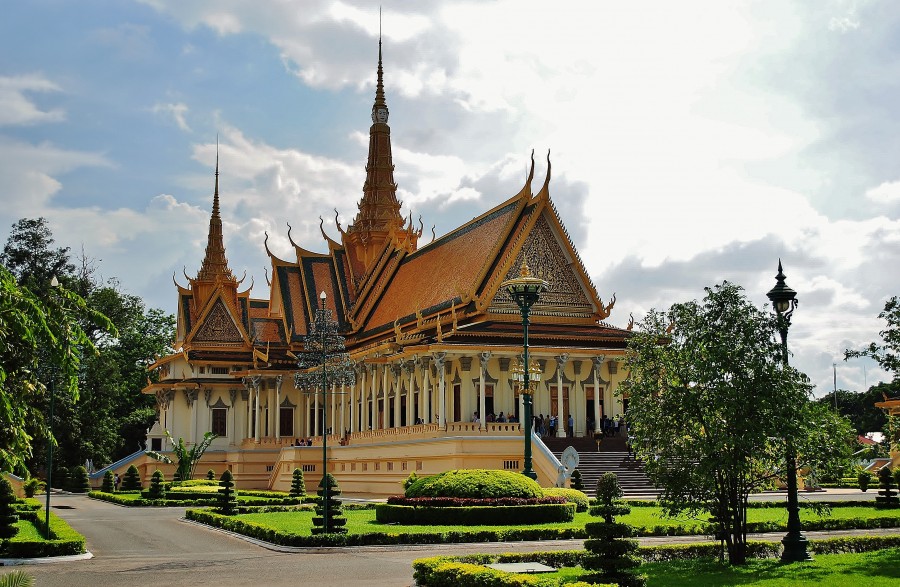
After a few days spent in the Cambodian capital, I was about to go to Siem Reap, which is the closest town from the temples of Angkor. Through my money problem, I have not had time to see so many important death squares and museums of genocide near Phnom Penh. I’m glad I have a good reason to come back here again. Leaving the city, I saw the Phnom Penh panorama from the bridge over the Mekong and when we stood on the crowded road, I saw the elephants at work. The road to Siem Reap was all asphalted and as I suspect the best in all of Cambodia as it is the main tourist and commercial route. On both sides were rice fields and very primitive but pleasant to the eye of the village. In the middle of my road I also stopped in a small village for dinner. I was fortunate enough to have a look around and it was a very attractive place for me. No one spoke English and the whole village was not prepared at all and surrounded only by rice fields. I had to use the language of gestures to make sure it was fun. Here I could feel Cambodian is real. I mean the lack of tourist preparation, lack of communication, but only rice fields, field buffalo and primitive but in their way charming stalls and their sellers.
Siem Reap and Angkor Wat
(Siem Reap, Cambodian lady friend, rickshaw drivers and their lives, unexpected ride to an “nice place”, cane squeezing technology, the whole beauty and description of Angkor Wat temples)
After a few hours driving I got to the place. As soon as I jumped out of the crowded bus, I saw a lot of rickshaws and children selling baguettes. Fortunately, I was able to save a lot of headache because a pre-arranged rider was waiting for me, who drove me to the guest house. As always in Cambodia and here I found a very nice room with a shower for only 5usd, in a nice cottage with garden. I noticed that in South-East Asia I manage to always find something good for a very low price. Siem Reap is a fairly large city for the Cambodian conditions and is a great hotel and dining facility as it is located near the Khmer temples of Angkor. Siem Reap is not the most interesting place but it is most convenient to stop if you want to see the temples. I still had a nice time here because I went to a local bazaar where I could make interesting pictures, played with badminton kids in the street and met a lovely girl who worked in the pastry shop and spent most of her time with her. She seated me at the table, gave me biscuits and asked me about Europe. I also learned to make cane juice. It depends on the fact that the cane stalks inserted between two rolls and juice squeezed from the stalk ran straight into the glass. It is hard work because you have to roll with rollers which in the Cambodian sun is tiring. On the way I was quite often accosted by rickshaws who in Siem Reap are quite depressed. They wanted to take me to the temples to see the sunset and some “nice place”, but they did not want to say what they meant. I also had some conversations involving gestures and went to a cheap, dirty but preserving pub realism. Nearly there were expensive hotels and restaurants for the rich snobs but it was just not my style. That same evening I also ordered transportation to the temples for the next day.
The next day, just before six in the morning, a moped guy came to pick me up to take me on some important objects. This type of transport is the best and cheapest because I sat behind the guide, no need to rent the whole rickshaw. I deliberately started my day so early. The idea is to see the sunrise in front of the main and best preserved Angkor Wat temple. But before I go on to narrate my impressions of this unique day, I will first say a few words about the temples themselves and the history of this place. Angkor temples are remnants of a lost city dating from the XII century and a memorial to the capital of the Khmer Empire. It is a complex of buildings, temples, sculptures, forest areas and water reservoirs, which are second to none. By the middle of the 19th century, the lost city was unknown to the world. For centuries it was considered a myth that was an unreachable relic of the past lying deep in the jungle. All the more so when the place was discovered, the surprise was not over. For hundreds of years, archaeologists have cleaned up temples from the jungle, giving it a contemporary look and still being refined. The Khmer Rouge was also the object of the regime’s destruction of the Khmer Rouge, who tried to destroy them with very primitive means of destruction, but fortunately they did not succeed. In the tragic time for Cambodia, the scientists were deported from the country and the work was stopped. Despite the better and worse times, the whole building is a phenomenon of religious and cultural architecture and I believe that anyone traveling here in Asia should necessarily come here.
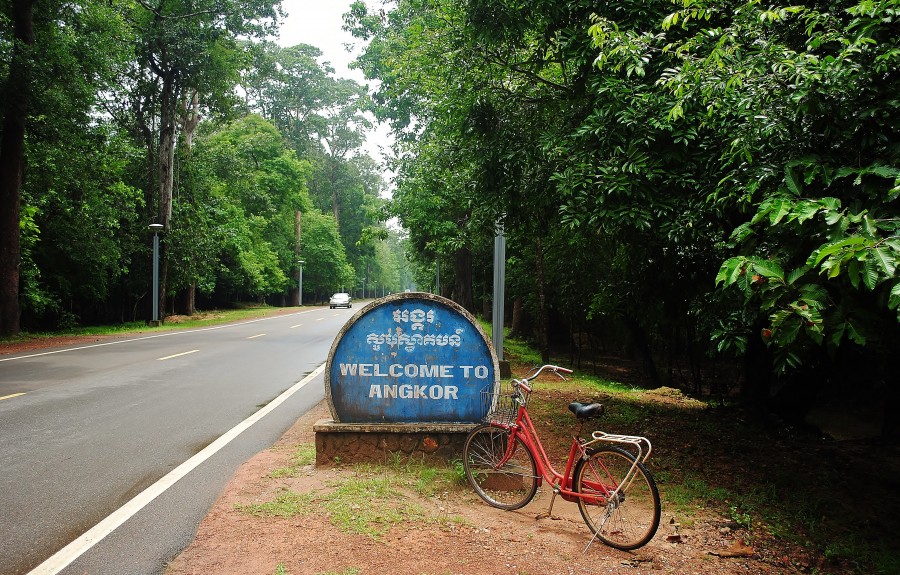
At the central point is Angkor Wat, which hits with its size and extremely massive structure and shape. The building consists of a pyramid with five towers, the highest of which is 65 meters. Angkor Wat is surrounded by a moat and walls of 1300 meters long and 1500 meters long and the temple itself is 1km square. Many of the walls are decorated with bas-reliefs depicting scenes from Hindu mythology and scenes from the victorious wars of King Suryavarman II. This ruler of the Khmer Empire built Angkor Wat and devoted it to the Hindu god Vishnu.
As it turned out, many tourists were heading to temples on rented mopeds and rickshaws. At the entrance I had to pay 20usd but it was worth it. I got on time as I was still under the cover of the night and crossed a wide stone bridge and stood over the moat waiting for the sunrise over Angkor Wat. When finally the sun came out the view was impressive. I saw a great temple with five massive towers, a lake and palm trees in front of it. Then I entered the temple and climbed high but unfortunately very short stairs. It was quite dangerous because there was no security and it was very easy. The view from above was beautiful because it gave me a fuller picture of the whole object and allowed me to see the chambers, pillars, stairs and many other passages in the upper parts of the temple. For a long time I stayed in this area and went around to see more important reliefs at the amazing Angkor Wat. When I was ready, I got on the back seat of my moped and went on to explore the other temples. First we stopped at a fairly large square where Angkor souvenirs were sold, and where there were bars made of palm leaf and wooden balls instead of walls. The homemade food was sold and it was very nice, especially since I had a view of the temple. The most memorable was the children who wanted to sell me postcards as soon as they saw me. I noticed that they were fluent in English and in order to increase sales profits they mastered a very cunning way of doing it. When I did not want to buy, they began to ask me about the capitals of very distant countries and when I did not know, I had to buy. Unfortunately, the children this time were unlucky because I know most of the capitals. Anyway, I bought from a girl who asked me the most questions and followed me until my head ached. After this incident and after meal, I got on a moped and went on. The next object was Angkor Thom or later the capital of the Khmer Empire built by King Jayavarman VII in the twelfth century. This temple has five gates, but today the most effective is the south gate, with four stone faces at its peak. This antique town was built on a perfect square, near Tonle Sap Lake and is surrounded by a moat. In front of Angkor Thom there is a bridge with stone statues on both sides. The city of Angkor Thom was built in the Bayon style, which is considered to be the “top of the iceberg” of Khmer architecture. In the middle of the former Khmer capital, there is also the Bayon Temple, which is accessible through each of the four gates. I personally feel very impressed by this temple. Especially when I came to one of the huge stone faces and when I could touch them. They have been here for over 800 years and relatively recently have been discovered. If anyone wanted to enter Angkor Thom and Bayonne in style, he could do it on elephants. I felt very well here, I could touch the elephants, sleep in the hammock in the shade of the trees or spend some time with the local people. All the time, I also encountered poverty. Going to one of the temples I saw little children who were playing themselves. They were dirty, ragged and walking around the trees begging for a dollar.
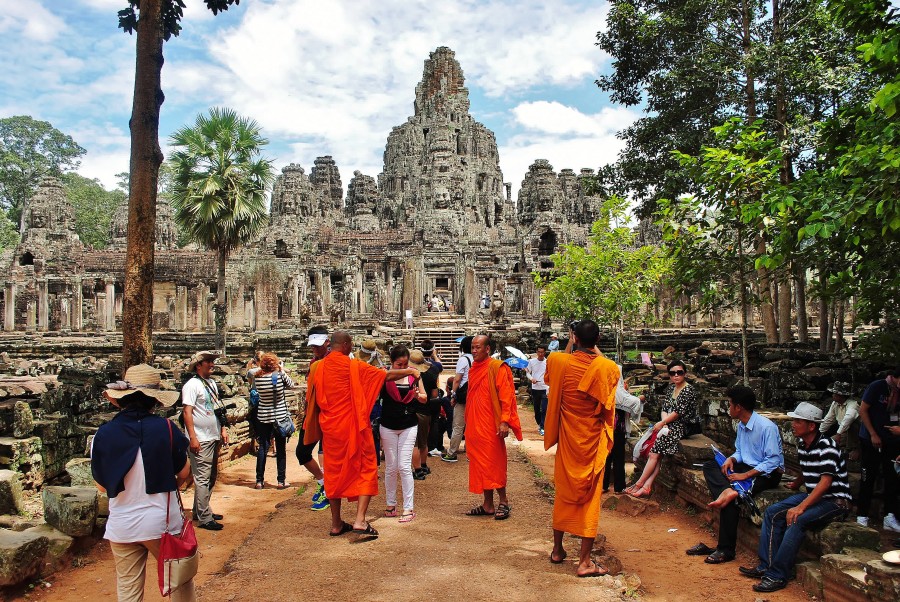
I’m sorry to see that, especially since I paid 20usd for the entrance and the money coming from tourists is enough to give these kids better conditions. My driver drove me to the Ta Prohm temple, which, although very ruined, was very interesting and unique. This temple is beautifully destroyed by mighty roots in the walls. It looked very attractive and in such a way that great roots were part of the building. When the first Europeans started purifying the Khmer Empire from the jungle in 1860, Ta Prohm was not cleansed and therefore is in the state in which it was discovered. Some of the boughs are huge, some small, looking like “blood vessels of the great architectural organism” -Ta Prohm. To this day, many reliefs have been preserved, and seeing this object is obligatory in my opinion, but the walk over it is made by huge boulders strewn about. I was just in the slippers so I had to be very careful not to twist the boulders on the boulders or slip on the ubiquitous boughs. Here I also experienced unpleasant events. Children in front of the temple were selling postcards and clothes without giving me peace of mind and others asked me to buy them something to drink. They really did not drink, they just wanted money and then gave it to sellers for a small percentage. In the middle of Ta Prohm I was also caught by a cop who wanted to sell my badge for 4usd. He said he was forced to do so because his salary was so low that he would not be able to survive. This is how my beautiful experiences have intertwined, with those sadness that reflect the realities of life in Cambodia. I also saw some other temples, such as Ta Keo, Pre Rup and Phnom Bakheng, dating back to the 10th century. All are located near Angkor Wat, Angkor Thom and Ta Prohm. Many of them have pyramidal structure and one is high enough to see Angkor Wat from it. Particularly beautiful it is seen at sunset, and this is how I advise visiting Angkor temples. Need to appear before Angkor Wat before sunrise and leave the entire complex of temples after sunset.
The Khmer empire was so big and so constructed that I saw a huge elephant pool. When it was dark, I got on a moped and was taken to a cabin. Other tourists came back to my mopeds and rickshaws, which made me see the first traffic jam in Cambodia. The temples of Angkor were one of the most beautiful experiences of my life and were worth every dollar and the time I spent here was very informative to me. Upon returning to Siem Reap, my driver drove me to my nice cabin but since it was my last day here I wanted to go out yet. First I met a few young people and then talked to a local moped driver. I talked with him about the life of the average Cambodian in their country. He said that his moped consisted of his entire family and his wife’s family, and that it was an investment to provide them with a livelihood. He rode from dawn to dusk, and the family worked in the rice field and brought up children. He said that children are especially important to them because they have to keep him quiet. At the moment, he had only one child but his wife was already pregnant with the other. Every family in his neighborhood has at least four as Cambodia does not pay taxes and has no pensions or other social benefits. That is, when children grow up and their parents are too old to work, then each child will give their parents some of their earnings and this will look like their pension. The driver said that he also intends to have four children easier to care for themselves and their parents. After this conversation, he took me to a place that all rickshaw drivers had advertised so far. It was supposed to be a bar and it turned out to be the largest brothel in Siem Reap.
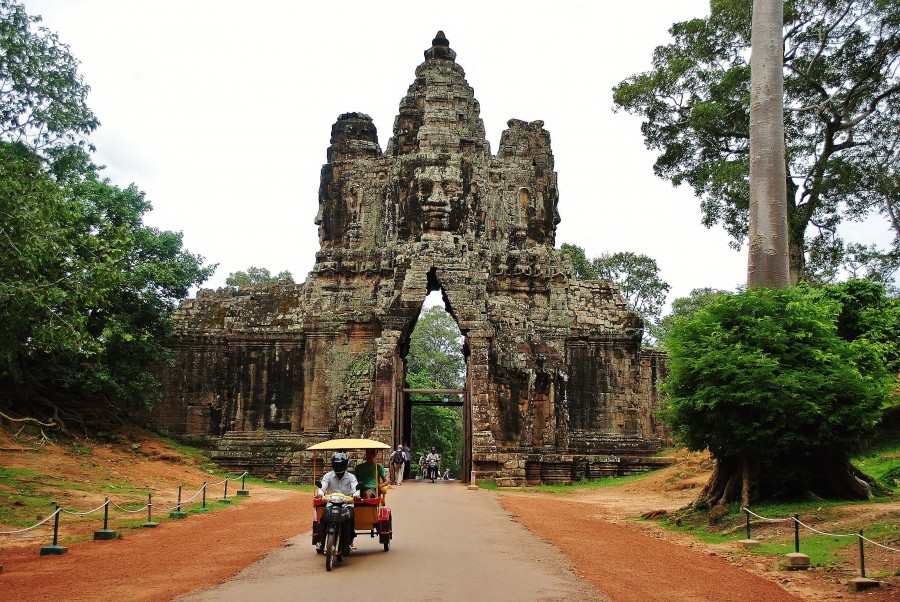
I stepped inside and saw how everything was cleverly organized. The place was similar to the cinema so that instead of the screen, the girls sat behind the screen and watched television. They were sitting on the elevators so that each one was well visible. As soon as I entered I first met the Americans whom I had met earlier in the temples of Angkor. They called me, put something to drink and so sitting on comfortable couches we started talking. The Americans were very undecided and they wanted me to help them choose it because it was extremely difficult. After some time I chose them after the girl and after about half an hour they came out smiling and said that I know what good. The whole place was quite cheerful, as the men were nervous and the girls were watching television behind the glass and did not pay attention. I quickly parted with this lovely place and on the way back I saw a few more such places. On the way I walked again to the cakes to my colleague and then just sleep after a day of great impressions. I mean Angkor Wat. The next morning I called up a few pictures and as usual, a woman who was breastfeeding was serving me and her bed was behind the counter. I played another short match in badminton and then went back to Phnom Penh.
My last days
(Last moments in Phnom Penh, the road to Vietnam, the American for whom Asia is an escape and salvation from America)
I spent only one more evening in the Cambodian capital, taking a walk on the Mekong River promenade and practicing by the National Museum along with many other people. It was the last time (this time) I saw the famous temples and the Royal Palace and walked around in a dirty but charming way. I also slept in the same hotel as before, and again I had the pleasure of seeing dozens of field beds on the sidewalks and people preparing to sleep in the open air. The next morning I got up early to go to the border with Vietnam. The road was nice and I did not even find too many pits. I met a middle-aged American who said he had traveled the world but wanted to live in South East Asia and had his main base in Saigon. When he is bored with Vietnam, he goes to Cambodia or to Thailand or Laos. He said that this is the world of his dreams and his real home, and in America he only has an apartment that he rents and lives here with money that he can not afford to spend even though he’s living like a king. He said he did not intend to return to the States just to work and pay taxes because life is too short and beautiful to waste. He said he also met many Europeans who also rent their homes for big money and live in Asia because it is stress free, fun, cheap and the food is not artificial. I listened to it all and thought it was a really wonderful way to live. After about three hours of driving, talking to this lucky and observing the surroundings I reached Bavet, a popular border crossing with Vietnam. Here I ate my last Cambodian meal in a border restaurant and then went on a new adventure, to Vietnam ………………….
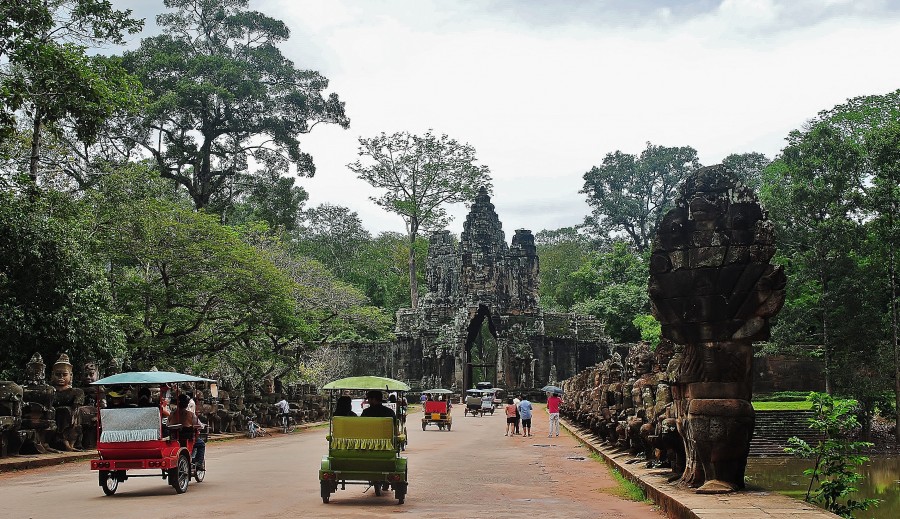
Summary
Cambodia was beautiful and definitely worth a visit. There is a lot of poverty here and the roads are a real challenge but many things compensate for the inconvenience. In the first place I am definitely setting the temples of Angkor Wat and the whole ancient capital of the Khmer Empire, which are struck by their size, ingenuity and the weight of history. They are all beautiful. The capital city of Phnom Penh, is also interesting and combines the realism of the Khmer life, with its natural and remarkable monuments. All Cambodia is charming and full of beautiful, untouched nature. I enjoyed playing here, and this country gave me a chance to get to know the history of this region. People have always been nice to me and despite the warnings I have always felt safe and the fact that it is so cheap allows for more stressful traveling around the country. I think Cambodia is one of the easiest ways to go back in time. Here I realized how little I need to be happy.



